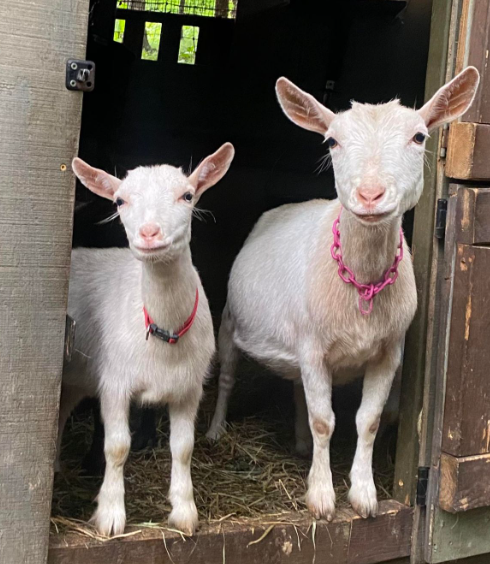Who remembers High School Biology? Genetics is the study of inheritance, and how genes from a parent make up the structure of every animal and plant. Understanding how traits pass can help you make better breeding decisions.
Genes are carried on chromosomes and store information to tell a cell how to build proteins. Every protein in a cell is coded by a specific gene. Chromosomes occur in pairs and are transmitted from both parents.
Alternative forms of the same gene, where a protein coded by the gene is constructed in a different way and has a slightly different function, is an allele. Alleles come in different forms and can be codominant (expressed equally), or one allele may be dominant and mask the other recessive allele.
When the cell has two different copies of the same gene it will always express the dominant version. An example would be dominant blue eyes in the Nigerian Dwarf dairy goat.
Typically, if a gene is recessive, it will only be expressed if the organism is homozygous for that allele, ie, if there are two copies of the same allele. We will cover the Punnett Square in a later article that explains this in more detail.
“An example of a recessive allele is the polled intersex allele--polled is dominant, but if a goat is homozygous for the PIS allele, it has issues, so the allele is recessive for intersex in females, and sperm granulomas in males,” explains Joanne Karohl of Dragonfly Farm.
Some recessive genes are not desirable or are harmful and can result in major changes in the activity of the cell. The Polled Intersex allele above can have a higher probability of pseudohermorphroditism. (See our May 2021 issue for more on this.)
Observable differences between animals, called phenotype, are due to genetics and environment. Therefore, proteins coded by the genes have an effect on the appearance of the animal.
Management practices, ie, the environment, can also impact observable differences such as growth rate or milk production.
Chromosomes are made of DNA, which is a long strand of bases joined together. There are four bases used in DNA and the order in the chromosomes is what the cell uses as the foundation of the genetic code.
The four bases are in a specific order in DNA and are the building blocks of the genetic code. They are adenine, thymine, cytosine, and guanine. Each base can only pair with a specific partner. These pairs make up a ladder of DNA.
DNA is twisted into spiral shapes known as “the double helix.” It was first described by James Watson and Francis Crick in 1953. This discovery showed the nucleus of cells is made of two complementary strands that lock together to form a ladder.
The information in DNA must be decoded before the cell can produce the protein. To make a protein from a strand of DNA, the cell has to copy the code for a gene from one of the strands of the DNA helix into a material that can leave the nucleus.
The copy, called a Messenger RNA, is made similar as the DNA. The copy acts as a shuttle between the DNA in the nucleus and the protein areas in the cytoplasm (liquid part inside a cell).
The building blocks are proteins called amino acids. There are 20 in the body, and 64 different combinations.
This starts the basics of genetics. Next month we will cover Genetic Engineering and the part it plays in agriculture.
Genetics Sources:
1. Faries, C, Darling K, Dement A. Veterinary Science.; 2011.
2. Karohl J. Recessive Alleles. December 26, 2023.
3. Winters K, Phenotype. December 26, 2023.
4. Wile JL, Durnell MF. Exploring Creation with Biology. Apologia Educational Ministries; 2005.
5. Double Helix: The Supporting Cast | by Life Sciences at CHF | LSF Magazine | Medium


Dam-Daughter-Granddaughter From Trenne Earl:

Cream-Gold Genetics from Kaeryn Rosebay Ridge:

From Rachel Oakfield

From Melissa Great-River

From Naomi Steffanson:




Wondering what the desire for blue eyes is?